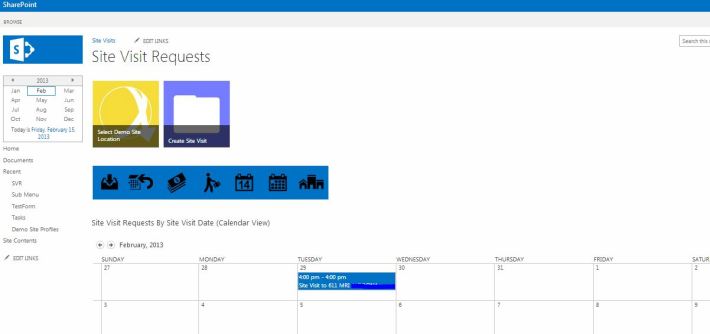Sometimes while working you feel like running away and to take a break…. maybe a drive to Vegas.
Now with this script, you will not have to. You will bring Vegas to your MS-SQL Server Query Window!
Just change the DB name (UmerDB) in the script below to any of your DB where you want to host. Maybe name it your favorite casino! and run the script.
To play all you have to do is execute the following command repeatedly in the query window with the DB selected:
USAGE: sp_LVG ‘login’,’password’,
EXAMPLE: sp_LVG ‘Umer’,’pwd123′,15.50
Different symbols have different winning factors. Every double or triple wins! It’s that easy!
Even if you have a $ show up in one of the slots, you don’t lose! See… told you it was easy!
Winnings go up in this order. $$$ is a jackpot:
‘#’
‘€’
‘£’
‘†’
‘A’
‘7’
‘¤’
‘$’
Enjoy!
USE [UmerDB]
GO
/****** Object: StoredProcedure [dbo].[sp_LVG] Script Date: 02/08/2010 15:06:53 ******/
IF EXISTS (SELECT * FROM sys.objects WHERE object_id = OBJECT_ID(N'[dbo].[sp_LVG]') AND type in (N'P', N'PC'))
DROP PROCEDURE [dbo].[sp_LVG]
GO
USE [UmerDB]
GO
/****** Object: StoredProcedure [dbo].[sp_LVG] Script Date: 02/08/2010 15:06:53 ******/
SET ANSI_NULLS ON
GO
SET QUOTED_IDENTIFIER ON
GO
--USAGE: sp_LVG 'login','password',
--EXAMPLE: sp_LVG 'lgn','pwd',15.50
Create Procedure [dbo].[sp_LVG]
@Login varchar(10),
@Password varchar(10),
@Money Money
AS
BEGIN
SET NOCOUNT ON;
Declare @Count As int
Declare @StartingBalance As Money
Declare @Slot1 As char(1)
Declare @Slot2 As char(1)
Declare @Slot3 As char(1)
Declare @Temp As char(1)
Declare @Slots varchar(3)
Declare @Factor As Float
Declare @Tries Int
Select @StartingBalance = 100
Select @Count = 0
Select @Tries = 0
IF NOT EXISTS (SELECT * FROM sys.objects WHERE object_id = OBJECT_ID(N'[dbo].[LVG]') AND type in (N'U'))
BEGIN
CREATE TABLE [dbo].[LVG]
(
vLogin varchar(10),
vPassword varchar(10),
mMoney Money,
iTries Int
)
END
Select @Count = Count(vLogin) From LVG Where vLogin = @Login and vPassword = @Password
If @Count > 0
Begin
Select vLogin As Your_Login, mMoney as Your_Balance, iTries as Tries From LVG Where vLogin = @Login and vPassword = @Password
Select @StartingBalance = mMoney From LVG Where vLogin = @Login and vPassword = @Password
If @StartingBalance > 0 AND @StartingBalance >= @Money
Begin
Create Table #Slots
(
iInt int,
cASCII tinyint
)
Insert into #Slots values (1,35)
Insert into #Slots values (2,36)
Insert into #Slots values (3,55)
Insert into #Slots values (4,65)
Insert into #Slots values (5,128)
Insert into #Slots values (6,134)
Insert into #Slots values (7,163)
Insert into #Slots values (8,164)
Create Table #Winnings
(
vSymbol varchar(1),
iOccurance tinyint,
fFactor float
)
Insert into #Winnings values ('#',2,0)
Insert into #Winnings values ('€',2,0.25)
Insert into #Winnings values ('£',2,0.5)
Insert into #Winnings values ('†',2,0.75)
Insert into #Winnings values ('A',2,1.75)
Insert into #Winnings values ('7',2,1.50)
Insert into #Winnings values ('¤',2,1.25)
Insert into #Winnings values ('$',2,2.0)
Insert into #Winnings values ('#',3,1.25)
Insert into #Winnings values ('€',3,1.5)
Insert into #Winnings values ('£',3,1.75)
Insert into #Winnings values ('†',3,2.0)
Insert into #Winnings values ('A',3,2.25)
Insert into #Winnings values ('7',3,2.50)
Insert into #Winnings values ('¤',3,2.75)
Insert into #Winnings values ('$',3,3.0)
Select @Slot1 = char(cASCII) from #Slots Where iInt = CEILING(8 * RAND())
Select @Slot2 = char(cASCII) from #Slots Where iInt = CEILING(8 * RAND())
Select @Slot3 = char(cASCII) from #Slots Where iInt = CEILING(8 * RAND())
Select @Slot1 As Slot_1, @Slot2 As Slot_2, @Slot3 As Slot_3
If @Slot1 = @Slot2 Or @Slot1 = @Slot3 Or @Slot2 = @Slot3
Begin
Select @Slots=@Slot1 + @Slot2 + @Slot3
DECLARE temp_cursor CURSOR FORWARD_ONLY FOR
Select distinct vSymbol, fFactor from #winnings where
((3 - LEN(REPLACE(@Slots, @Slot1, ''))) =iOccurance and vSymbol = @Slot1)
OR
((3 - LEN(REPLACE(@Slots, @Slot2, ''))) =iOccurance and vSymbol = @Slot2)
OR
((3 - LEN(REPLACE(@Slots, @Slot3, ''))) =iOccurance and vSymbol = @Slot3)
OPEN temp_cursor
FETCH NEXT FROM temp_cursor INTO @Slots, @Factor
CLOSE temp_cursor
DEALLOCATE temp_cursor
Update LVG Set mMoney = (mMoney + (@Money * @Factor)) ,
iTries = iTries + 1
Where vLogin = @Login
End
Else
Begin
--Select @Count = max(iInt) from #Slots
Select @Count = 2 --For $
Select @Temp = char(cASCII) from #Slots where iInt = @Count
If @Temp <> @Slot1 And @Temp <> @Slot2 And @Temp <> @Slot3
Update LVG Set mMoney = (mMoney - @Money) ,iTries = iTries + 1 Where vLogin = @Login
Else
Update LVG Set iTries = iTries + 1 Where vLogin = @Login
End
Drop Table #Slots
Drop Table #winnings
Select @Login As Your_Login, mMoney as Your_Balance, iTries as Tries From LVG Where vLogin=@Login
End
End
Else
Begin
Insert into LVG values (@Login, @Password, @StartingBalance, 0)
Select @Login As Your_Login, @Password as Your_Password, @StartingBalance as Your_Balance
End
--Drop Table LVG
--Drop proc sp_lvg
--sp_LVG 'up2','up2',10
END
GO


